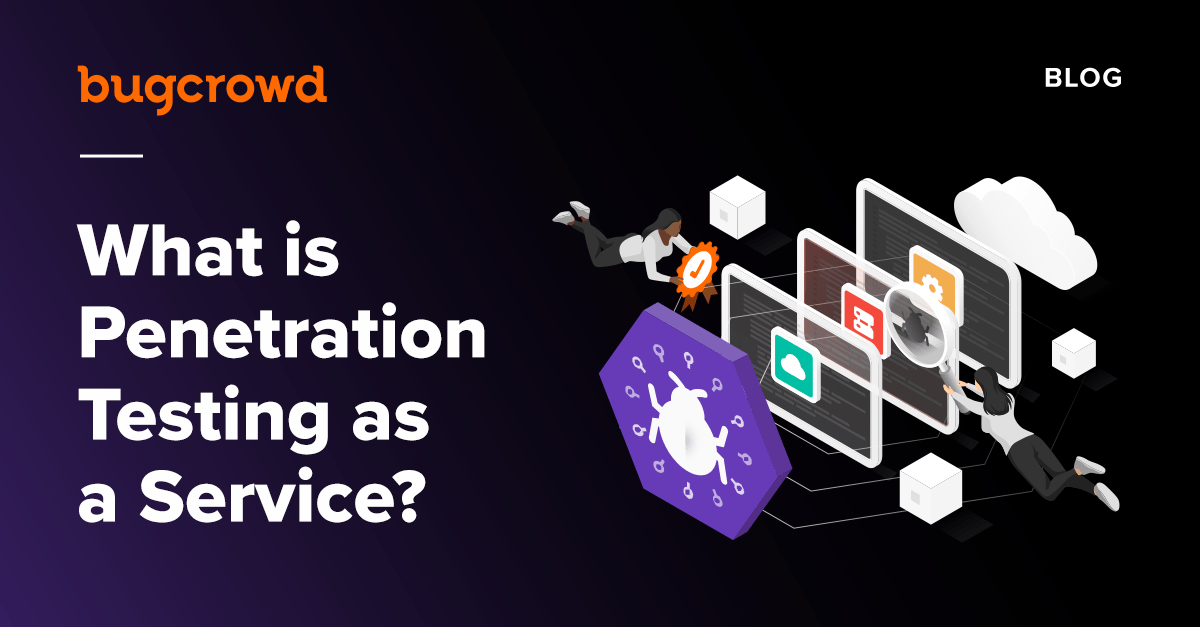Learn the basics of penetration testing as a service (PTaaS)—what it is, how it works, and why it’s the new evolution of penetration testing.
Security professionals are familiar with penetration testing, or pen testing, a service where external consultants mimic real-world attacks to identify security vulnerabilities and weaknesses.
Companies work with pen testing firms they know and trust, testers work to established methodologies for a fixed period, and tests take place at wide intervals, often annually. Testers surface their results in a report and these weaknesses get fixed, so over time fewer results are exposed and the process becomes more routine.
Security used to be a top-down process, where a small number of experts would evaluate and test assets for vulnerabilities before they shipped. Traditional pen testing was a good fit in this environment—external experts simulated the worst of what your company could expect to encounter, and shared findings in a report that you could implement in your own time.
Why is traditional pen testing no longer suitable?
- Limited talent pool: Traditional pen testers were drawn from a small pool of available professionals. This made them limited in the tactics and techniques that they could execute on.
- Speed of implementation: Pen testers will schedule assignments weeks or even months in advance, with the report coming days or weeks after the assignment is complete. This leaves potential risks exposed for too long.
- Remote working: Today’s threat perimeter has expanded beyond the physical boundaries of the organization. Traditional pen testing often focuses on on-site infrastructure, and may overlook threats emerging in a distributed network.
- Scaling issues: Traditional pen testing services operate with one or two testers, and may not scale well to match the growth of your organization. As your business grows, so does your infrastructure, and a yearly pen test may not be sufficient to cover all assets.
- Noisy, inactionable results: Traditional pen tests can take weeks or months to complete, with no access to findings until the final report. Often, remediation steps are unclear.
Today’s security landscape looks a lot different from the one that gave us traditional pen testing. Your organization’s technology stack has a multitude of tools, your perimeter stretches to coffee shops and home networks, and your data is of value to malicious actors in every time zone. That’s before we even get started on any products you might be building.
Pen testing as a service (PTaaS) is an upgrade to the testing playbook. It uses today’s technology and security best practices to secure the modern environment.
PTaaS Explained
In its most basic form, PTaaS is a new wrapper and delivery method for an established service. This makes the process of ordering and implementing a test easier, by speeding up onboarding and implementation while saving money in the process.
By making pen tests digital-first, PTaaS unlocks remote-testing, widens the potential bench of testers, and allows for integration into the SDLC, streamlining delivery and making reporting and remediation far easier.
What Does Best Practice PTaaS Look Like?
Dealing with distributed, complex threats means relying on distributed, specialist talent. PTaaS done to the highest standards requires a new take on the pen testing consulting assignment that offers the benefits of a platform-based approach to the task while tapping into a worldwide supply of testing talent. This crowdsourced PTaaS allows you to quickly launch tests with specified requirements, getting to work within days and working according to your specific security needs.
Moving from pen testing to crowdsourced PTaaS means allowing the breadth of security complexity to work as an asset rather than a liability. When working with a crowdsourced PTaaS provider there is the potential to tap into a bench of testers drawn from across the world, but only if they offer a deep bench and discerning methodology to match them. When done right, it gives you access to testers with narrow expertise in specific assets or methodologies, or particularly impressive track records, but beware of crowd washing.
PTaaS that properly deploys The Crowd taps into the bottom-up dynamics, surfacing the most relevant talent through Darwinian competition and sophisticated algorithms. Testers build a name from themselves through their work, and providers use this data to match the most appropriate testers for your needs in each assignment.
Threats are online and constantly evolving—security needs to be the same. Using crowdsourced PTaaS is like moving from relying on encyclopedias to drawing from Wikipedia, with the best performers rising to the top and readily available for assignments.
What are the Benefits of PTaaS?
PTaaS offers three key strengths relative to the traditional method.
- Speed: In security, risk is a function of time as well as criticality. PTaaS is faster at initiating assignments and delivers continuous results to quickly catch and resolve threats.
- Savings: By offering testing that is aligned with your needs and integrating findings quickly and effectively, PTaaS gives you more bang for your buck and helps your budget go further.
- SDLC: Testing is only part of what you want from an assignment—remediating risks that emerge is the important part. PTaaS integrates with the SDLC to resolve risks where they emerge, rather than creating a new workflow to implement static findings.
How Does PTaaS Differ from Traditional Penetration Testing?
| PTaaS | Traditional Pen Testing |
| Dashboard for viewing results 24/7 | Delayed reports that require further action |
| Integration with SDLC | Siloed results |
| Rapid onboarding and ability to scale | Cumbersome, consulting-heavy engagement |
What to Look For in a PTaaS Platform
At the risk of stating the obvious, PTaaS providers should be able to deliver high-quality testing, and do so through a service that is convenient and minimizes friction. There are a few elements that make sure PTaaS adds the most value.
- Pentester bench: More selection among testers is what draws many buyers to PTaaS, and you should choose a provider that maximizes this strength. This is also a vote of confidence in the platform, as providers that attract more hackers tend to run more professional, advanced platforms.
- Skill set diversity: Of course, higher numbers only means higher value if they bring more diversity in approaches, skill sets, and mindsets among testers. Look at the professional background available—the more languages, technical skills, experience, and outlooks present among testers, the more likely they are to find new and relevant vulnerabilities.
- Testing clearance: If you’re testing sensitive assets that require security clearance, then you’ll need a provider who supports this. Look for a range of qualified testers, a platform that complies with the specific needs of your program, and a provider with a track record of similar assignments.
- Data-driven pentester selection: A large, diverse pool of testers with advanced capabilities is only useful for you if you’re able to find the right team for the job. Providers should prevent the paradox of choice by using algorithms or AI to match you with the most appropriate testers for your needs.
- SDLC integration: Tightening the loop between identifying vulnerabilities and remediating them speeds the process up and reduces costs. This should happen at the back end by integrating the fixes directly into the SDLC, as well as offering the potential to incorporate the outputs from bug bounty programs, vulnerability disclosure programs and other crowdsourced security measures with pen tests to provide a more consolidated service.
- Platform reporting: PTaaS can provide more data than traditional testing, allowing you to clearly calculate return on investment. Providers should present all data from tests in real-time and make this accessible for you in an efficient format.
Summary—Penetration Testing as a Service
PTaaS harnesses the power of a diverse group of professional hackers to substantially improve on the traditional pen testing model. By increasing the pool of testers and providing the functionality of a platform, it offers better results, finding and remediating vulnerabilities more quickly while offering more data that can allow you to calculate ROI. In sum, PTaaS provides a comprehensive, adaptable, and efficient approach to system security.
Overview of Bugcrowd PTaaS
Bugcrowd has been offering PTaaS since 2022 as part of the Bugcrowd Platform. This builds on our expertise as the first company to offer a managed bug bounty program, and includes a rich dashboard with real-time access to test status, analytics, findings, and methodology.
Our proprietary CrowdMatch AI technology finds precisely the right testers based on parameters such as skillset, track record, and security clearance. You can buy, configure, and launch a pen test delivered by global experts matched to your precise needs in hours rather than days and receive results instantaneously. You can also combine pen tests with bug bounties for further security coverage that taps into the Crowd for security expertise.



